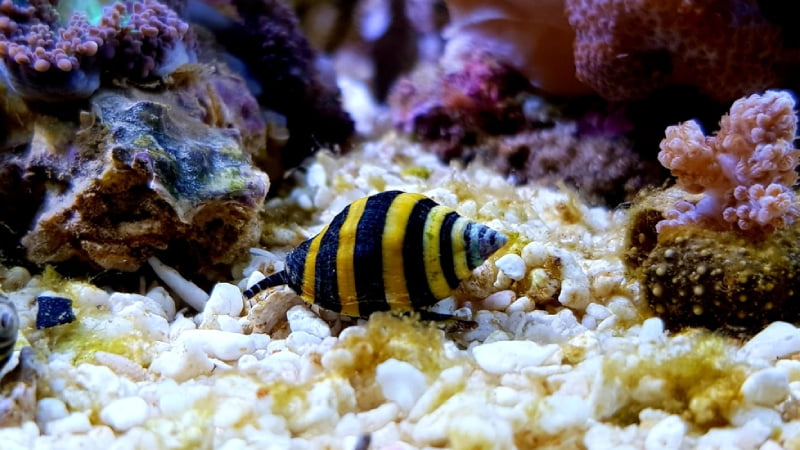There are many creatures that you can add to your reef tank. Snails are a great addition to your reef tank. They will keep the tank clean and add attractiveness. There are many species of snails on the market. So which is best snails for reef tank?
Here are our four favourite snails for saltwater aquariums that are suitable for beginners and experts alike!
See also:
Best Snails For Reef Tank
#1, Astrea Snail
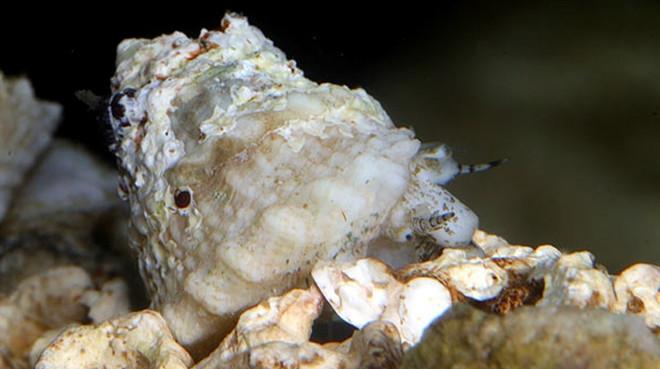
Native to the Caribbean, Astrea snails are a popular addition to saltwater tanks. They are easy to care for and are really helpful in keeping your aquarium clean.
They are fairly small snails, they only grow to about 2-4cm and live about 3 or 4 years. They have a very interesting appearance with a pyramid-shaped shell. Their color is also very diverse from green-yellow.
Astrea snails are efficient cleaners of detritus with large appetites. They eat hair algae, green algae, diatoms and other microalgae. They also eat floating debris. Astreas are a good addition to any tank, especially those that suffer from hair algae outbreaks.
These Astrea snails require a long time to acclimatize. However, once acclimated, they are very hardy and can tolerate quite high temperatures of water. They are hardy, but Astrea snails are prone to overturning. It will be difficult for them to turn their bodies over on their own. Therefore, they are likely to die if they fall into a rocky crevice or from a tank glass. So if you see them lying on their side, flip them back onto the right side. This also means that when you put snails in the tank, you must be gently and place them correctly, not just toss them into the tank.
#2, Bumble Bee Snail
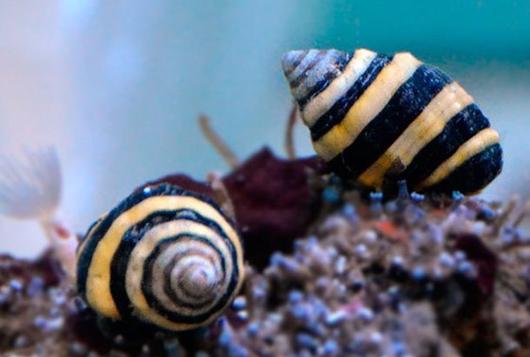
The Bumble Bee snail is native to the Indo-Pacific waters. Bumble Bee snails have a very attractive appearance and are easy to recognize. Along their shells there are alternating black-yellow bands, which look like bumblebees. Maybe that’s also why it got the name Bumble Bee Snail. This lovely look really provides a colorful addition to your tank.
This snail is quite small, only growing to about half an inch. However, contrary to their appearance, they are a big eaters and are aggressive towards other small snails. If they do not have enough food, they may attack and eat the smaller snails in the tank.
This snail is a carnivore, it does not eat any algae. It will eat the leftovers meaty food from your fish, eating meat debris, bristle worms and other creatures in the sand. The way they eat meat debris before they go bad is how these snails clean your tank
This snail is nocturnal. They will be active at night and hide most of the day. So you have to add crevices or rocks for them to hide to feel safe. They are also a great sand-sifters because they love to bury into the sand. It will find food, like worms in the sand. So Bumble Bee snails will thrive in tanks with lots of rocks and deep sandy bed.
#3, Cerith Snails
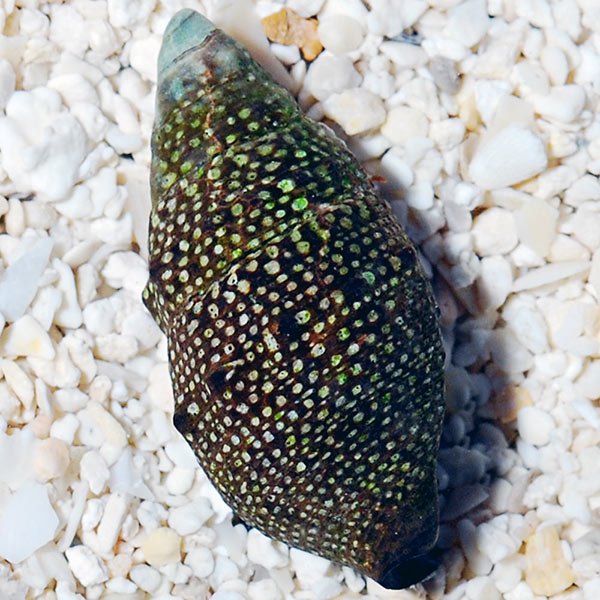
These beautiful elongated shells are a great addition to your aquarium. The Cerith snail is native to the Caribbean and the waters around Mexico.
Cerith snails are interesting-looking creatures, with a very long, twisty shells. They usually only grow to about an inch, and grow very slowly. Cerith snails are a hard worker on the cleaning team and are very good at cleaning your tank.
These snails are omnivores and can eat a lot of things. They will eat detritus, fish food leftovers, fish waste, diatoms, hair algae and Cyano.They have a tendency to bury themselves in the sand as well, so they are proficient sand sifters. They generally go into hiding in the sand bed when not eating. This is also really helpful for it aerates the sand.
They are nocturnal creatures and are active at night. They are peaceful, non-aggressive snails. So, be careful with other creatures you put them with. Because this snail can become a delicious snack in the eyes of larger, carnivorous fish. Another danger is Hermit crabs. Hermit crabs can bully Cerith snails to take their shells.
If the case is accidentally flipped, they will be able to turn back on their own.
#4, Nassarius Snail
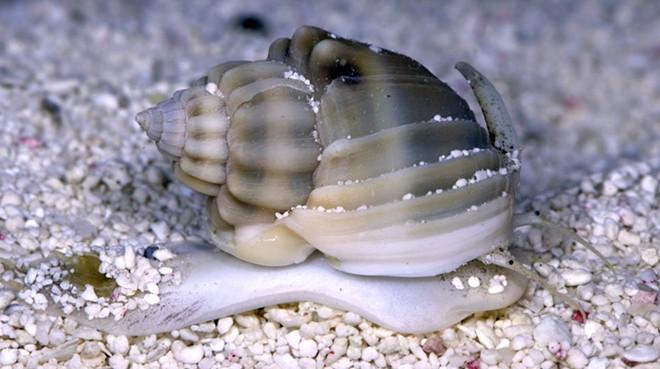
Unlike Bumble Bee snails, they don’t seem to eat all the microfauna in the sand bed. Nassarius snails are carnivores so they won’t eat any algae. Instead, they eat detritus and uneaten food.
Their ideal habitat has to have fine sand. They will bury themselves in the sand. The way they move around will filter the sand and make the sand bed always clean. Their small size allows them to get into the narrowest of crevices to clean it.
Some Other Related Questions
How many snails do I need for a reef tank?
About one snail per five gallons of tank size is recommended. The aquarium system should be established for at least few months before introducing this voracious scavenger.
Does Astrea Snail have cons?
Besides the great features, Astrea Snail also has many disadvantages. When adding them to the tank, they will not get used to their new environment right away, but it will take some time. They have trouble eating very long hair algae. When overturned, they are incapable of turning over on their own. They do not aerate the bed.
Can you keep snails and hermit crabs together?
Snails and hermit crabs can live together as long as your hermits have plenty of food and a selection of shells. If you don’t provide enough shells for hermit crabs, it is very likely that they will bully the snails for shells. Similarly, you must provide hiding spots so your snail can hide and make sure both creatures have enough space.
Conclusion
There are many types of snails that are suitable for your reef tank, and above are four of the snails I consider the most suitable. When choosing snails, do your due diligence to make sure they’re right for your reef tank. Hope this article has helped you choose the best type of snail.

Annette M. Chaney is an experienced marine biologist with over 20 years of experience as an aquarist and fishkeeper. She started her first aquarium at a young age, filling it with frogs and goldfish obtained from the ten-cent pet store.
Annette grew up caring for and breeding African Cichlids, which led to a hobby in high school that doubled as a profitable means. Attending Reed College gave her time to solidify herself as an accomplished aquarium caretaker with an eye for sales. After that, from 2009 – 2013, she studied at Roger Williams University – one of the most prestigious universities for Aquaculture and Aquarium in USA. She is the founder of AquariumCircle since 2010.
